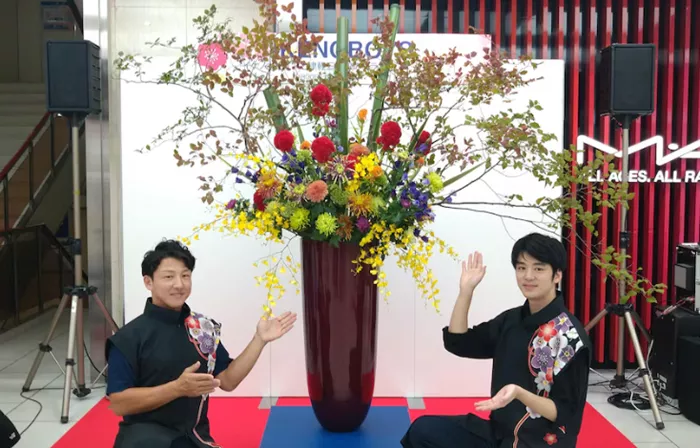Reviving Ikebana: A Modern Push for Male Participation in Japan’s Traditional Art.
A recent Google search for “Ikenoboys” reveals a striking image: three men clad in sleek black outfits, posing with secateurs at their hip pockets. While their attire might suggest a new boy band, these men are part of a unique movement. They are members of the “Ikenoboys,” a group dedicated to reintroducing ikebana, the traditional Japanese art of flower arranging, to men.
Historical Context and Modern Shifts
Ikebana, which was once a male-dominated practice in Japan, is now predominantly associated with women. Historically, ikebana pieces were grand, measuring up to 4 meters in height and crafted using robust elements such as plum and cherry blossoms. Nobuaki Tanaka, the oldest member of the Ikenoboys and a carpenter by profession, explains that the art form has evolved. “Ikebana used to be seen as a masculine pursuit,” Tanaka says. “Today, it’s often perceived through the image of a woman in a kimono arranging small, delicate works.”
Modern ikebana is diverse, encompassing various styles and materials. From towering arrangements to compact, intricate designs, the art form is taught across more than 300 schools in Japan.
Reviving Male Participation
Despite a historical predominance of male practitioners, today, 95% of ikebana enthusiasts are women. The Ikenoboys aim to change this perception. Through performance art, workshops, and online presence, they are showcasing men as capable and stylish flower arrangers. “Men can excel in ikebana,” asserts Tanaka.
In Melbourne’s Abbotsford Convent, Shoso Shimbo is conducting a workshop as part of the Wa Melbourne Ikebana Festival. Shimbo, who leads the session, demonstrates the art of arranging flowers to a group of men, including first-timers like Andrew Mackay and Jason Corneby. Participants are surprised by the complexity and variety of ikebana arrangements.
From Historical Flourishing to Modern Popularity
Ikebana’s origins are debated, with some historians tracing it to Shinto practices and others to Chinese influences. During the 17th century, ikebana gained prominence among the samurai class, driven by the emperor’s admiration for the art. Over time, as Japan’s economy grew, women gained the means and interest to engage in hobbies like ikebana.
Originally, women found the large-scale ikebana pieces impractical, leading to the development of simpler, smaller arrangements. This new form of ikebana gained widespread popularity among women. Post-World War II, the Japanese government further promoted ikebana among women, linking it to social advantages.
Changing Stereotypes
Gary Liu, an accountant who attended Shimbo’s workshop, initially felt uncomfortable as a man participating in flower arranging. However, his experience revealed the physical demands of ikebana, challenging gender stereotypes. “You need to know how to bend thick branches, use a saw, and sometimes even drill,” Liu notes. “It’s actually quite a masculine job.”
A Reflection of Individuality
Oshun Tsukagoshi, a fourth-generation male ikebana master, highlights that gender norms are less rigid outside Japan, making it easier to recruit male practitioners. In Japan, however, the art is attracting a new demographic of men, including company executives who find ikebana enhances their decision-making skills.
The Ikenoboys, ranging in age from 22 to 40 and comprising carpenters, pharmacists, monks, and other professionals, believe ikebana reflects individuality rather than conforming to a single expression of power or delicacy. Tanaka emphasizes, “Ikebana shows the uniqueness of each person, whether they are creating something powerful or delicate.”
The Ikenoboys’ mission underscores a broader effort to challenge traditional gender roles in ikebana, celebrating it as a versatile and inclusive art form.


